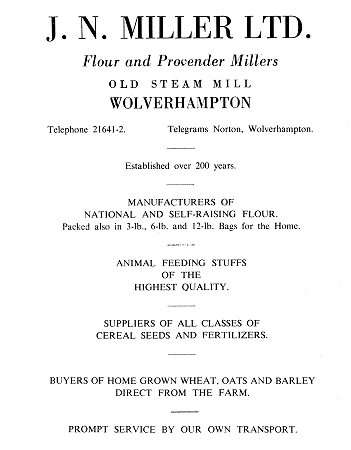|
The mill used a wide range of
British and foreign grain, dealing with hundreds of tons
of wheat a week. Products included white flour, national
flour, self-raising flour, biscuit flour, wholemeal
flour, bran, and animal and poultry feed.
The mill's products were delivered
to most of the country. Grain arrived by bulk grain
vehicles, and mainly came via the Liverpool Docks or the
Manchester Ship Canal. A high proportion of the wheat
came from Canada, the United States, Argentina,
Australia, Russia, and the Danube Basin. The remainder
came from British farms, together with barley, oats,
rye, and other course seed grains for animal feed.
The incoming wheat was weighed on a
30 ton Avery weighbridge and taken to the storage silos
that had a capacity of 2,000 tons. Separators removed
the course roughage, and the wheat was washed, scoured,
screened, and prepared for milling in the mixing bins.
All dust and loose matter was withdrawn from the wheat,
which was conditioned and dried before milling. Each
product was carefully monitored during the milling
process to maintain a high standard, and consistency. |

An advert from 1948. |